Monograph
Monograph

Ana Mendieta - Search for Origin
G. Gourbe, C. Guardiola Bravo and 2 more
Devoted to Cuban-born American artist Ana Mendieta (1948–1985), this monograph appears with an exhibition at Museo de Arte Contemporáneo de Castilla y León, which brings together around 100 works from over fifteen years of production (1968–1985). The exhibition explores how the artist never ceased to reinvent herself through political and vibrant contemporary work, developing an original, ephemeral sculptural language, at times performative in act and informed by her research into primitive myths and rock art. It reveals her relationship to the visible and invisible, her way of rendering the unspeakable intelligible through traces of the body and its relation to nature.
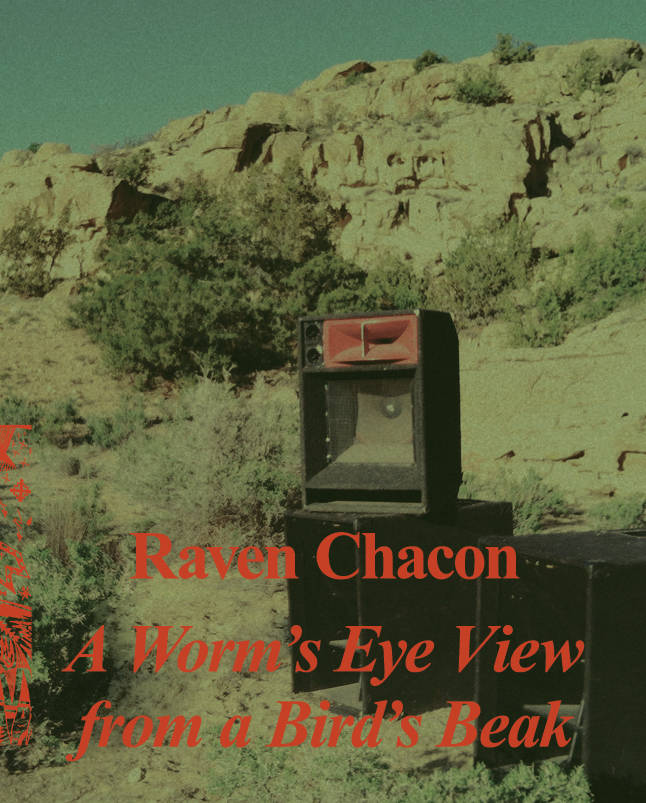
Raven Chacon: A Worm’s Eye View From a Bird’s Beak
Stefanie Hessler, Katya García-Antón and 1 more
A career-spanning catalogue featuring excerpts from Raven Chacon’s scores, musical prompts, and drawings interspersed with full-color documentation and descriptive texts of installations, sculptures, and performances. Raven Chacon is a composer and artist creating musical experiences that explore relationships among land, space, and people.
In an experimental practice that cuts across the boundaries of visual art, performance, and music, Chacon breaks open musical traditions and activates spaces of performance where the histories of the lands the United States has encroached upon can be contemplated, questioned, and reimagined. In 2022, Raven Chacon became the first Native American to win the Pulitzer Prize for Music, and was awarded a prestigious MacArthur “genius” fellowship in 2023.
Texts by Raven Chacon, Lou Cornum, Aruna D'Souza, Candice Hopkins, Anthony Huberman, Ingir Bål Nango, Marja Bål Nango, Dylan Robinson & Patrick Nickleson, Eric-Paul Riege, Sigbjørn Skåden, Ánde Somby.
Foreword by Katya García-Antón and Stefanie Hessler.

"If you slap the water, you hurt the heads of the fish"
The first comprehensive monograph devoted to artist Bea Schlingelhoff.
Conceived on the occasion of Bea Schlingelhoff's solo exhibition No River to Cross at Kunstverein München, this publication extends far beyond this to survey fifteen years of her artistic practice through imagery, ephemera, and various texts. Additionally, the publication brings together five newly commissioned pieces of writing, penned by Catherine Chevalier, Gloria Hasnay, Christina Irrgang, Helene Moll, and Sadie Plant, each focusing on a specific body of Schlingelhoff's work. Each book is one of a kind and bound in different endpapers from the private collection of the artist's father.
Edited by Gloria Hasnay.
Texts by Catherine Chevalier, Gloria Hasnay, Christina Irrgang, Helene Moll, Sadie Plant.

Burn & Gloom! Glow & Moon!
Retrospective monograph: a journey through over two decades of intersectional and queering practices in film, performance, sculpture, community work, and textiles.
In Daschner's textile-based works, threads are minimal yet highly visible, akin to the pinch needed to wake up from a dream. These works—as well as her collages—merge with her confronting yet inviting image politics: she cuts and pastes stories of love and pleasure, violence and resilience, death and rebirth.
The written contributions reflect on Katrina Daschner as part of a hardworking generation of queer artists and makers who have been responding to the major conceptual shifts and gender upheavals happening in contemporary art since the 1990s, especially in New York and London. They highlight Katrina Daschner's longstanding line of intersectional queer interest that continues to undermine (neo-)liberal, heteropatriarchal conceptions of sexuality, gender, subjectivity, and relationships
Edited by Övül Ö. Durmuşoğlu.
Texts by Amelia Groom, Tim Stüttgen; foreword by Övül Ö. Durmuşoğlu; interviews by Rike Frank.

Working Title
An overview of Phill Niblock's work since the 60's, through about twenty essays and interviews by musicologists, art critics and historians, various documents, scores, and more than 8 hours of videos on 2 double layer DVDs.
With a career spanning more than 40 years, Phill Niblock has not only proven himself as one of the most preeminent composers of the American musical avantgarde, but also an accomplished filmmaker and performer. He is also revered as an events producer through his Experimental Intermedia Foundation, providing a venue and a label that has been of great assistance to numerous other artists and musicians in helping to make their work known.
This bilingual book (French / English) provides an in-depth look at all these activities, through various essays and interviews, either newly written, previously unpublished, or that have never been available in French before. These were written by very different people—from musicians who have played Niblock's music, to fellow composers, from long-time friends to specialized musicologists and art historians. They discuss such various matters as musical and cinematographic aesthetics, psychoacoustic processes, historical background, philosophical insights and technical advice for playing the music, or just give their personal recollections of time spent together with Niblock.
The book is accompanied by 2 double-sided DVDs of atypical videos: Remo Osaka, a continuation of The Movement of People Working series, with a quite peculiar soundtrack; two separate DVDs of the Anecdotes from Childhood, best viewed together as an installation; and Katherine Liberovskaya's 70 for 70 (+1), Seventy (one) Sides of Phill Niblock, realized in 2003/2004 on the occasion of his 70th birthday, which portrays the composer through memories recounted by friends and relatives.
With writings by Phill Niblock, Rich Housh, Erika King, Guy de Bièvre, Volker Straebel, Richard Glover, Alan Licht, Seth Nehil, Rob Forman, Johannes Knesl, Arthur Stidfole, Juan Carlos Kase, Raphael Smarzoch, Jens Brand, Bob Gilmore, Ulrich Krieger, Richard Lainhart, Bernard Gendron, Susan Stenger, Mathieu Copeland, and liner notes from the first two LPs.
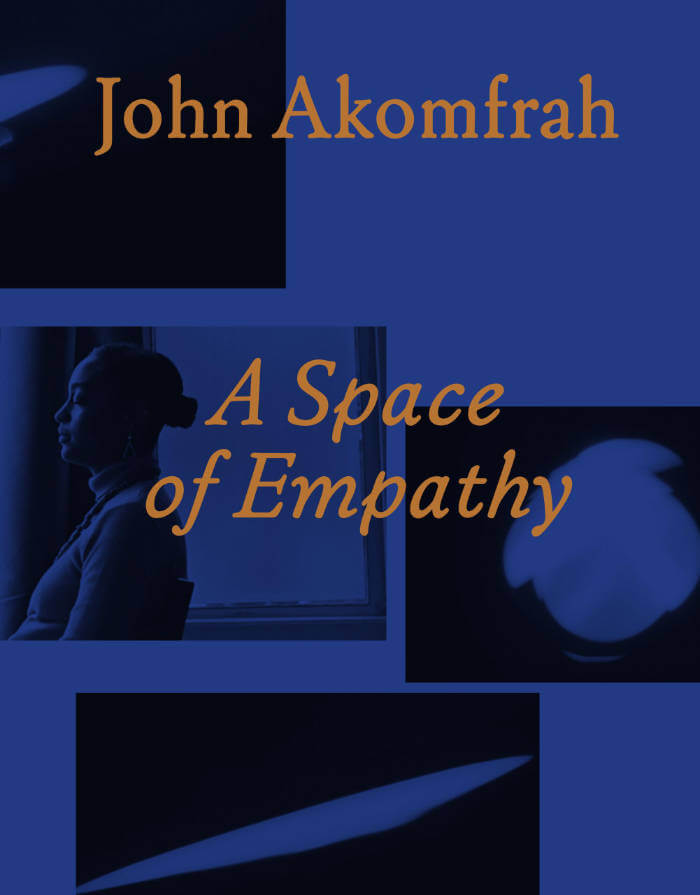
A Space of Empathy
An overview of John Akomfrah's work, with contributions by Julia Grosse and Nelly Y. Pinkrah, an interview with the artist, along with a foreword by Sebastian Baden.
John Akomfrah creates thoughtful video works of haunting audiovisual intensity. He tells of the radical changes and crises of the present and past on characteristic large-format screens. From November 9, 2023 to January 28, 2024, the Schirn Kunsthalle Frankfurt is presenting for the first time a comprehensive overview of the artist's work in Germany, featuring a selection of three major multichannel installations from recent years: The Unfinished Conversation (2012), Vertigo Sea (2015), and Akomfrah's new work, Becoming Wind (2023). A co-founder of the influential London-based Black Audio Film Collective (established in 1982), Akomfrah's work interweaves newly shot film sequences with archival material to create multilayered, at times associative collages, frequently in the form of simultaneous narrative structures.
Akomfrah's immersive installations critically examine colonial pasts, global migration, and the climate crisis. He addresses one-dimensional historical representations by allowing multiple perspectives to emerge in the narrative, disrupting the notion of linearity and the illusion of a one and only truth.
Published on the occasion of the eponymous exhibition at Schirn Kunsthalle Frankfurt in 2023-2024.
John Akomfrah (born 1957) is a British artist, writer, film director, screenwriter, theorist and curator. His works are characterised by their investigations into memory, post-colonialism, cultural identity, temporality and aesthetics and often explores the experiences of migrant diasporas globally. Akomfrah was a founding member of the influential Black Audio Film Collective, which started in London in 1982 alongside the artists David Lawson and Lina Gopaul, who he still collaborates with today.

Togetherward
A volume assembling new and existing documents that revisit, mix and remix moments in the work of artist Christian Nyampeta.
The volume is composed of affections, alliances, appearances, material, and memories that exceed singular authorship, in the form of dedications, documents, elegies, film stills, footnotes, photographs, poetry, presences, and translations. Together they draw a biography of research: the journeys of engaging with art learning and making in, with, and against the worlds of today.
This stream of existing documents is sequenced alongside new contributions by Omar Berrada, Binna Choi, Belinda Kazeem-Kaminski, Natacha Nsabimana, and Isaïe Nzeyimana.
The publication emerges from a close collaboration with GfZK (Galerie für Zeitgenössische Kunst, Leipzig) over the last three years. During this time, two projects were held at GfZK: A Flower Garden of All Kinds of Loveliness without Sorrow, 2018–2019, and Lovers in a Dangerous Spacetime, 2021.
Literature, history, theology and philosophy, as well as insights from experiences and encounters in practice between contemporary art and design percolated into the two exhibitions; public programs; and an ongoing scriptorium, in which the artistic works staged gatherings of artists, theorists and mythologists from Rwanda and further afield who would otherwise never meet.
Titled Togetherward, a word invented by philosopher and artist Denise Ferreira da Silva to describe the rhythm of Nyampeta's method, the volume preludes a series of publications in images, writing, sound, film, and musical recordings that revisit the layers and sediments of the global events of the previous decade—all driven by the burning question of how to live together.
Edited by Vera Lauf and Christian Nyampeta.
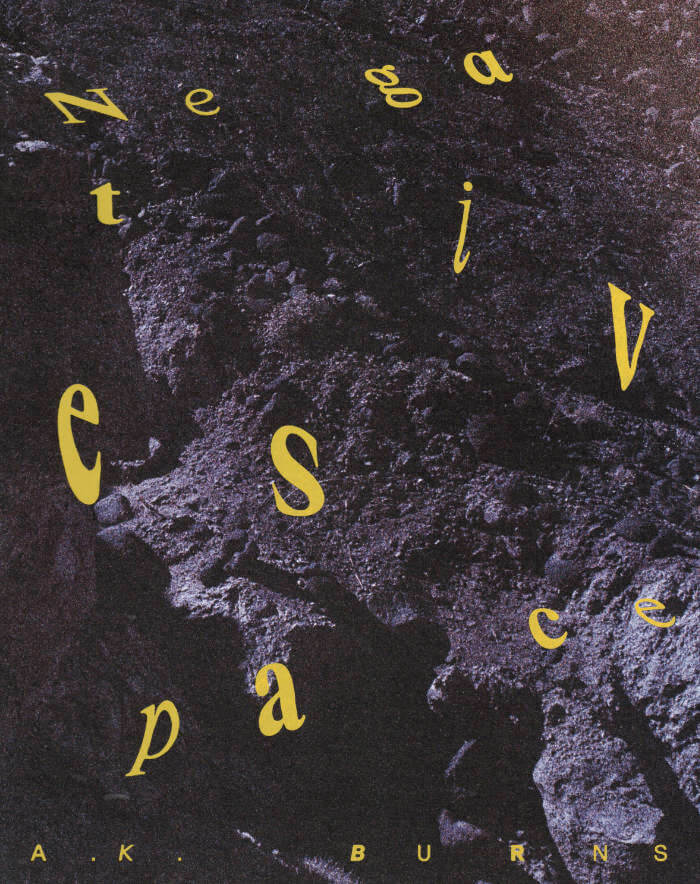
A.K. Burns: Negative Space
Chronicling an epic multimedia project 10 years in the making, A.K. Burns' first monograph grapples with climate change, community and sociopolitical agency
Deploying science fiction, material feminism, eco-anarchism, queer theory and technoscience, New York-based artist A.K. Burns (born 1975) explores the fraught relationships between humanity and nature in an epic multimedia work, Negative Space (2015-23). This nonlinear allegory provokes questions about marginalized bodies, environmental fragility and technology. Developed as a cycle of four video installations, Negative Space imagines new relationships to the spaces we occupy and the impact of our bodies in these spaces through imagery, research and critical and creative writings. Set in a speculative present, the tetralogy envisions a new materialist cosmology wherein hierarchical relations are transformed.
Edited by Karen Kelly and Barbara Schroeder
Text by CA Conrad, Mel Y. Chen, Aruna D’Souza, Megan Hicks, Simone White, and a conversation between the artist and Karen Archey

École nationale supérieure des beaux-arts de Lyon
Initiales #05 — Andrea Fraser
Claire Moulène, Emmanuel Tibloux
Le cinquième numéro de la revue d'art et de recherche « rétro-prospective » est consacré à l'artiste et performeuse Andrea Fraser, figure clé de l'art des années 1990 et 2000 et du courant de la « critique institutionnelle » (une monographie complétée par une grande enquête sur l'espace critique réalisée auprès d'une cinquantaine d'artistes, critiques et philosophes internationaux).
Avec contributions de Kader Attia, Eva Barto, Sophie Bonnet-Pourpet, Marie de Brugerolle, Gregory Buchert, Daniel Buren, Marie Canet, Gregory Castéra, Inès Champey, Thierry Chancogne, Claire Fontaine, François Cusset, Judith Deschamps, Paul Devautour, Philippe Durand, Joao Enxuto & Erica Love, Andrea Fraser, Nicolas Frespech, Dora García, Romain Grateau, Emmanuel Guez, Thomas Hirschhorn, Aliocha Imhoff & Kantuta Quirós, Béatrice Josse, Franck Larcade, Ju Huyn Lee, Sven Lütticken, Fabrice Mabime, Bartomeu Mari, Chus Martínez, Gwenael Morin, Claire Moulène, Jean-Luc Moulène, Yan Moulier Boutang, Vincent Normand, François Pain, Gerald Petit, Anne Querrien, Thierry Raspail, Sinziana Ravini, Delphine Reist & Laurent Faulon, Christophe de Rohan Chabot, Phillippe Roux, Jean-Baptiste Sauvage, Thomas Schlesser, Ida Soulard, Fabien Steichen, Michel Surya, Emmanuel Tibloux, Vier 5, Ulf Wuggenig, Italo Zuffi.

Bruce Baillie: Somewhere from Here to Heaven
A scrapbook on Baillie's life and career, with stills, ephemera and writings by filmmakers across generations.
This is the first book on the West Coast avant-garde filmmaker Bruce Baillie (1931-2020), famed for the films Mass for the Dakota Sioux (1964), Castro Street (1966) and All My Life (1966) and for his influence on directors such as George Lucas (one of Lucas' charitable foundations helped fund the digital transfer of Baillie's films) and Apichatpong Weerasethakul. Alongside stills from Baillie's films, the book fosters a dialogue between Baillie and filmmakers and writers across several generations, including experimental filmmaker Peter Hutton, filmmaker and anthropologist J.P. Sniadecki and Jonas Mekas, along with suites of images by the Thai director Apichatpong Weerasethakul, British artist and experimental filmmaker Ben Rivers and Brazilian artist and filmmaker Ana Vaz, among others. Reproductions of correspondence and other ephemera are also included.
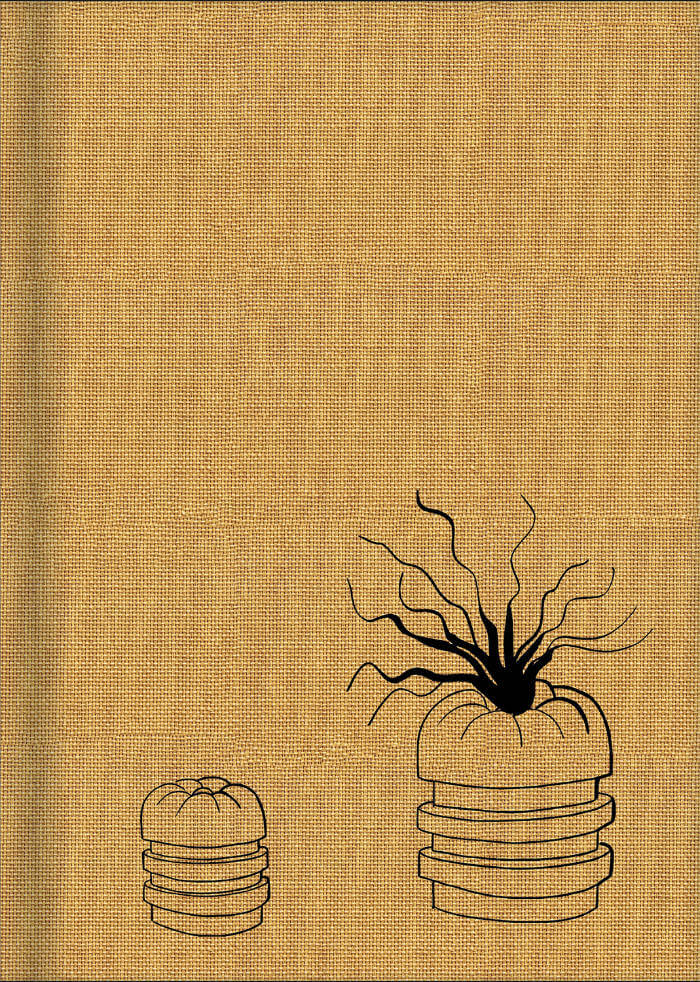
Elika Hedayat
First monograph of the Franco-Iranian artist.
This monographic catalogue looks back over the first 15 years of work by Iranian artist Elika Hedayat through more than 110 reproductions. Two of these are on a 1:1 scale, and a detailed set offers a comparison of the dimensions of the works in relation to each other.
Françoise Docquiert introduces the issues at stake in her practice with an essay, complemented by an interview with Joana P.R. Neves.
"Elika is a Parisian-Iranian artist. This cultural blend is slightly ironic though very significant, as it nourishes her artistic work and practice. Inspired by her childhood, her life, and the violence in her native country, she makes films, videos, and drawings always filled with beauty, scathing humour and cruelty." - Annette Messager
Born 1979 in Tehran, Elika Hedayat lives and works between Paris and Tehran. Arriving in France in 2004, she was admitted to the École Nationale Supérieure des Beaux-Arts in Paris in Annette Messager's studio, from wich she graduated with the Jury's congratulations in 2008.
For her works, Elika Hedyat often uses testimonies and experimental documentaries stage in a dreamlike and imaginary universe. Her stories are contemporary and her characters are real. All of her works revisits historical references, transferring them to the field of personnal experience, mainly using the various possibilities of her repertoire as a narrative document and memory retrieval tool. Reality, memory and imagination come together in a personal story under different forms : drawing, video, documentary, painting and performance.
Text by Françoise Docquiert.
Interview with Elika Hedayat by Joana P. R. Neves.
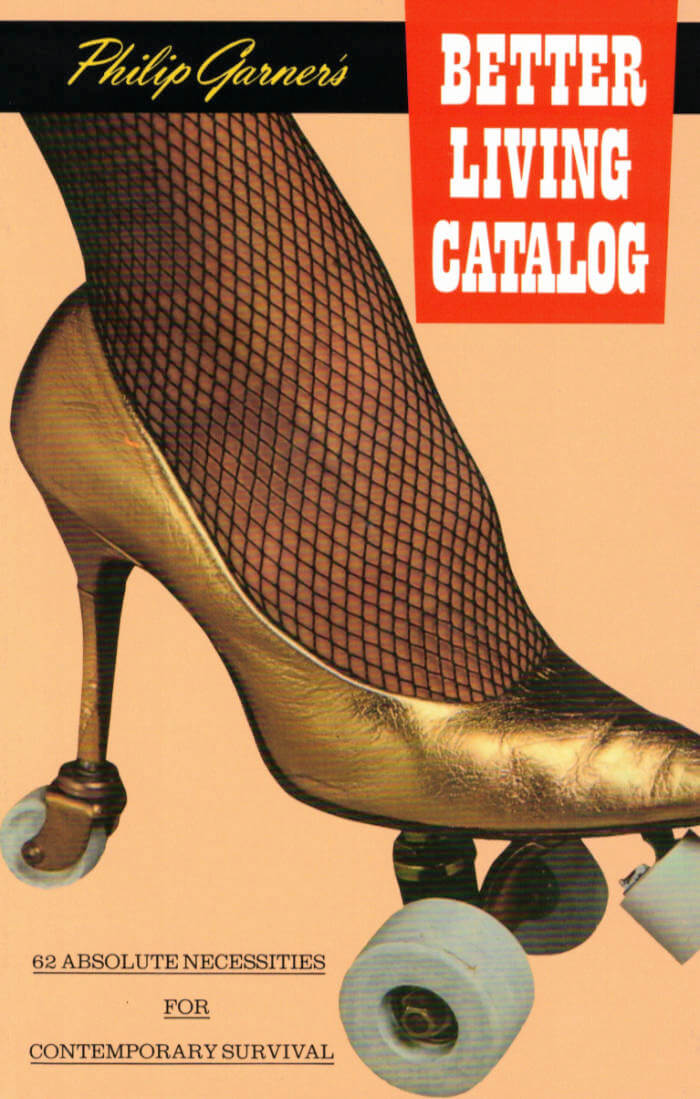
Better Living Catalog
Pippa Garner’s Better Living Catalog, originally published in 1982, takes the form of a mail order catalog featuring clever and whimsical inventions that parody consumer goods while simultaneously critiquing America’s obsession with ingenuity, efficiency, leisure, and comfort. These works, which were made as prototypes and photographed for the publication, take the form of improbable accessories, clothing, footwear, home appliances, and office gadgets.
For example, the “Reactiononometer,” a portable wristband, instantly measures social success, while the “Digital Diet Loafers” display the wearer’s weight with every step. If the “Munch-o-Matic” reduces deskwork interruptions by flinging a snack right into the user’s mouth, other items promise financial solvency (the controlled cash flow “Autowallet”), sustainable waste management, or mess-free companionship (the “Pet-a-Vision” TV console). The artist asserts that all of the products in the book are “absolute necessities for contemporary survival.”
The Better Living Catalog was a pop hit when it was published, earning Garner spots on nighttime TV talk shows and attention from magazines like Vogue and Rolling Stone. In a meme-filled culture, the works still resonate today, finding their analog in widely-circulating consumer products, and—in the case of the “High Heel Skates”—even appearing unattributed in the runway collection of a major luxury fashion brand.
A few years after the Better Living Catalog was published, Garner began her gender transition, which she has characterized as an artistic project that draws conceptual parallels to the altered consumer goods she has continued to create since the 1970s. The artist’s practice has always been about hacking—gender hacking, she stated, was “an excellent premise for maverick conceptual art and diametrically opposed to anything I’d ever done.”
Many of the prototypes Garner created for the publication were repurposed or recycled, making this previously rare gem of an artist book one of the artist’s few works to now be widely available.
Born in 1942 in Evanston, Illinois, Pippa Garner (formerly known as Philip Garner) began her practice in the late sixties as a member of the highly regarded Transportation Design department at ArtCenter, California, with plans to become a car stylist, and was drafted to Vietnam to serve as a combat illustrator. In the mid-80s, Garner began her gender transition, which she considers a conceptual artwork, marking an extension of her practice from twenty years of altering cars, garments, and consumer products to using her own body as raw material. Garner appeared on the Tonight Show Starring Johnny Carson and other talk shows, showcasing her satirical consumer product inventions, and her artwork has been featured in Car & Driver, Rolling Stone, Arts & Architecture, and Vogue, among other publications. In the 1980s, her performance, design, and video work was exhibited in institutions including the Los Angeles Institute of Contemporary Art; Whitney Museum of American Art; and Museum of Contemporary Art, Los Angeles; since 2015, she has had exhibitions at STARS, O-Town House, Redling Fine Art, and Parker gallery in Los Angeles; Jeffrey Stark in New York; JOAN, Los Angeles; Kunstverein München; 49 Nord 6 Est – Frac Lorraine, Metz; Kunsthalle Zurich; and Art Omi, Ghent, New York. She is the author of three other books: Utopia… or Bust! Products for the Perfect World (1984), Garner’s Gizmos & Gadgets (1987), and the zine Beauty 2000 (1992/2021).

Inserts in Real Time: Performance Work 2000–2023
'Inserts in Real Time' is the first monograph on the performance work developed by artist Dora García over the past twenty years. The book contains a conversation between the artist and curator Joanna Zielińska; a selection of her performance scripts; her performances to date, listed, illustrated, described, and contextualized; and three newly commissioned texts – by art historian Sven Lütticken, performance theorist Bojana Cvejić, and Dora García. The publication is co-published with M HKA, Antwerp, and accompanies Dora García’s exhibition 'She Has Many Names'.
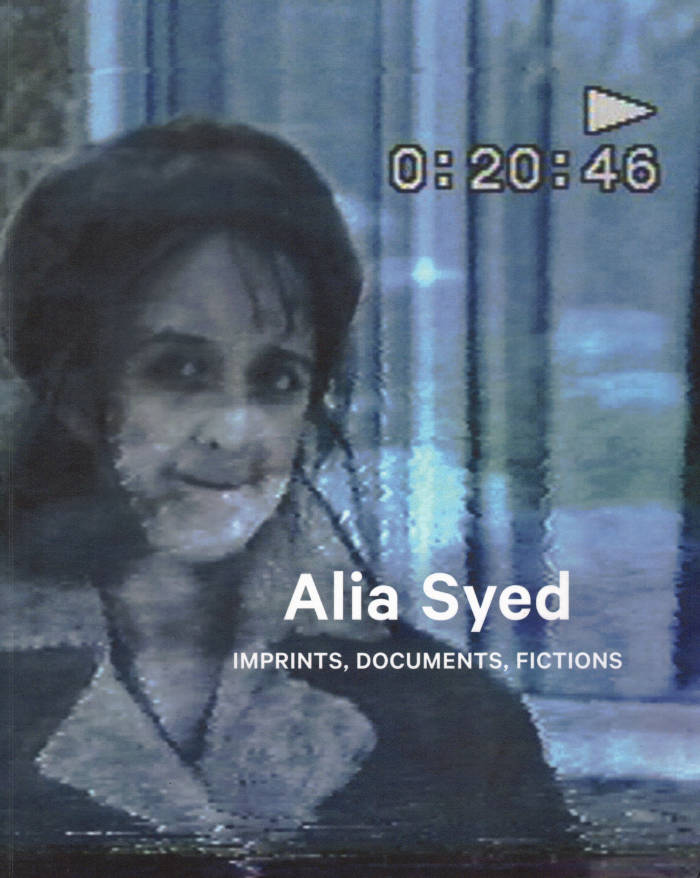
Alia Syed: Imprints, Documents, Fictions
Published by Courtisane festival in collaboration with Open City Documentary Festival, Alia Syed: Imprints, Documents, Fictions (ed. María Palacios Cruz) is the first monograph to be devoted to Syed’s work and features new essays by Jemma Desai, Inga Fraser, Peter Gidal, Rahila Haque, Salima Hashmi, Anjana Janardhan, Ruth Noack and Henrietta Williams, as well as writing by Syed herself.

Art is Magic
First monograph in French: from Rod Stewart to the Industrial Revolution, Art is Magic collates all of acclaimed artist Jeremy Deller's cultural touchstones into one lovingly curated volume, balancing these artistic inspirations with examples of Deller's visionary work.
Published on the occasion of the exhibition Jeremy Deller: Art is Magic at Frac Bretagne, Musée des beaux-arts and La Criée art center, Rennes, in 2023.
Texts by Jeremy Deller; interview with Jeremy Deller by Daniel Scott, Alan Kane, Mary Beard, Jonny Banger, Cheerio. Translated from the English by Sandra von Lucius.
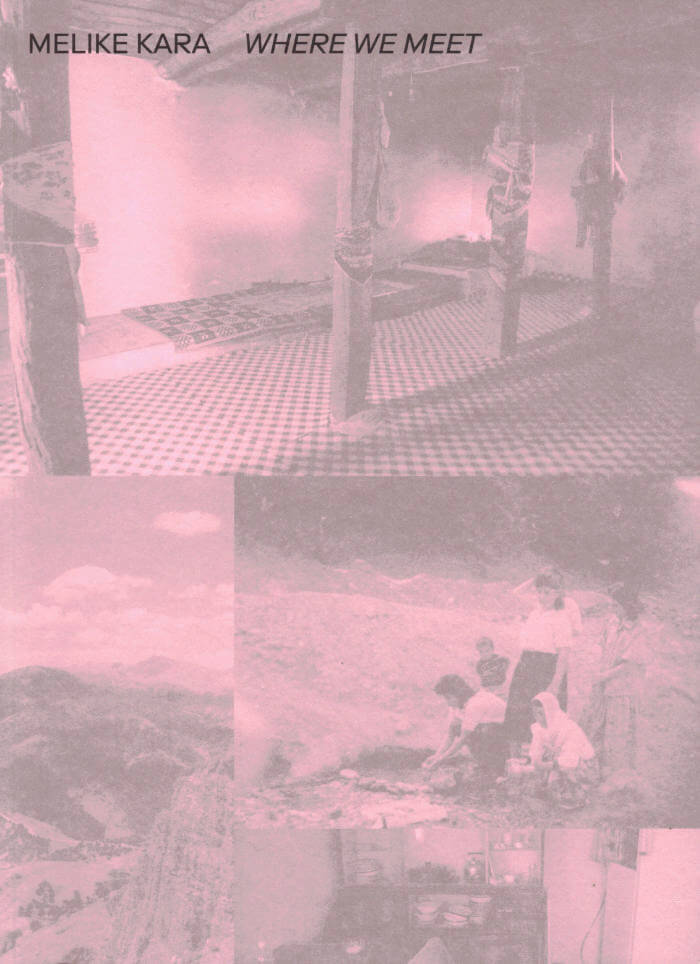
Verlag der Buchhandlung Walther König
Where We Meet
This first publication of the artist Melike Kara, emphasises her work of the last two years and thus on a specific body of work that represents a shift in the artist’s methodology.
Her paintings have undergone a change, as they are less figurative and more abstract (although Kara’s abstractions reveal forms here and there).
Some of these forms are reminiscent of limbs, hybrids between bodies and dissolution. Her focus has also changed in terms of subject matter.
It is now less a matter of consciousness, and more about identity and questions of origin. She thus complements, or rather expands, the presentation of these paintings in exhibitions with site-specific installations.
Published after the exhibition, ‘Melike Kara: Where We Meet’ at Jan Kaps, Cologne (4 June – 22 August 2020).
With contributions from Jana Baumann, AnneClaire Schmitz & Fabian Schöneich.

Verlag der Buchhandlung Walther König
Joan Jonas: Moving Off the Land
A multimedia meditation on the many meanings of the ocean across history.
This volume closely follows the development of Joan Jonas' (born 1936) multiformat project Moving off the Land. The artist's most recent body of work, it encompasses three years of research into the significance of the ocean throughout history, and features sculptures, drawings, sound and new video productions. Jonas combines poetry and prose by writers such as Emily Dickinson and Herman Melville with texts by Rachel Carson and Sy Montgomery, and with moving images filmed in aquariums and in Jamaica, where algae bloom and over-fishing pose urgent threats to the ecosystem. The monograph includes the complete script for the performance along with annotations, images of Jonas' live performance, and a complete chronology with documentation of the performance's history.

Traveling in the Dark
A fully-fledged artistic project expanded with writings, poems, and aphorisms by the artist alongside various interviews.
Traveling in the Dark is an exhibition and a publication by the world-renowned film director, poet, writer, music composer, literary critic, and art theorist Trinh T. Minh-ha. The book is a fully fledged artistic project conceived by Trinh from the script and visuals of her film What about China? and expanded with her writings, poems, and aphorisms as well as various interviews that investigate "a relationship to infinity," "memory of the mirror," and the "in-between." The book offers an experience with many possible entries, words, voices, thoughts, images, and pauses. As a visual, poetic, and philosophical experience, Traveling in the Darkinvites us to rethink and experience "reality" differently from an approach mainly based on knowledge and re-presentation that we already possess or that is imposed on us. In other words: How can we learn to see our world without a priori seeing and knowing? In a time when the "all-seen" and "all-told" invade and control our daily lives, our private spheres and urban spaces, where are the areas of invisibility and shadows that leave us autonomy to see and to think, to say and to represent, to remember and to imagine? Traveling in the Dark engages the visitor and reader in an open montage of visual, sonic, and poetic textures, whose resonances, vibrations, recollections, exchanges, brushes, reflections, and passages undermine any pretense of fixed identity, historical truth, or prescribed territory.
Published on the occasion of the eponymous exhibition at Rockbund Art Museum, Shanghai, in 2022-2023.
Born in Vietnam in 1952, Trinh T. Minh-ha is an artist, writer, music composer, filmmaker, and literary theorist, teaching as Distinguished Professor of the Graduate School in the departments of Gender & Women's Studies and Rhetoric at the University of California, Berkeley, San Francisco.

Fragments, or just Moments
For more than three decades, Tony Cokes (b. 1956, Richmond, USA; lives and works in Providence, USA) has been exploring in his work the ideology and affect politics of media and popular culture as well as their social impact. Starting from a fundamental critique of the representation and visual commodification of African-American communities in film, television, advertising, and music videos, Cokes has developed a unique form of video essay that radically rejects representational imagery. These fast-paced works consist of found text and sound material from diverse sources such as critical theory, online journalism, literature, and popular music.
The US artist’s first institutional solo exhibition in Germany also marks the first comprehensive collaboration between Kunstverein München and Haus der Kunst. The thematic starting point for Cokes’s new productions is the ideological and propagandistic entanglements of both exhibition venues during the Nazi era as well as their cultural-political role in the context of the 20th Olympic Games in Munich in 1972.
The publication Fragments, or just Moments accompanies the eponymous exhibition and translates stills from the newly produced video essays into a book format while examining the significance of Cokes’s work in terms of a contemporary approach to institutional critique. The essays are written by Tina M. Campt and Tom Holert, with an introduction by Emma Enderby and Elena Setzer (Haus der Kunst) as well as Maurin Dietrich, Gloria Hasnay, and Gina Merz (Kunstverein München).

Studio Visit
Studio Visit collects two decades of work by Brooklyn-based artist Sara Greenberger Rafferty (born 1978), known for her material transformation of photographs and her use of comedy as an artistic strategy. Organized by material sensibilities around paper, plastic, glass, metal, fabric scraps, and "garbage," Studio Visit rethinks the monograph format, revealing Sara Greenberger Rafferty’s practice through intimate studio documentation, sketches, notes, and other ephemera, punctuated by full-color case studies of major works.
With image descriptions by art historian Kate Nesin and new writing by Kristan Kennedy and Oscar Bedford, as well as reprinted texts by poet Lisa Robertson and media scholar Shannon Mattern, among others, Studio Visitsurveys Sara Greenberger Rafferty's cultural commentary through dynamic and conceptually rigorous art.
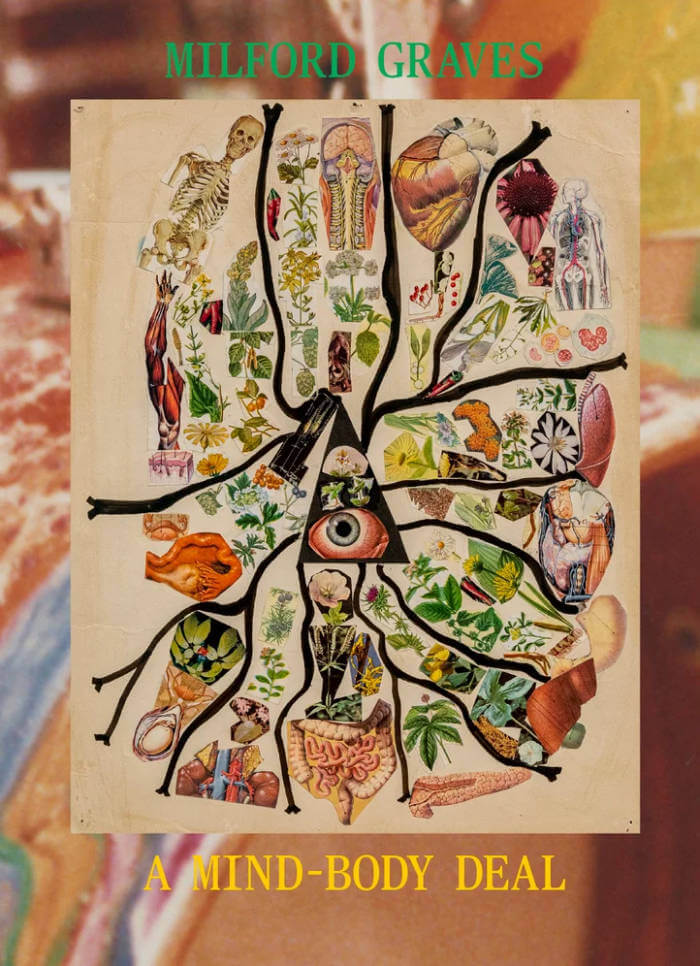
Milford Graves: A Mind-Body Deal
The first-ever overview on the multimedia art of free-jazz pioneer and creative polymath Milford Graves
Milford Graves (born 1941) has been a revelatory force in music since the mid-1960s, liberating the drummer from the role of "timekeeper" to instrumental improviser and giving rise to the free-jazz movement, with groundbreaking performances alongside Lou Reed, Min Tanaka and John Zorn.
But music cannot contain the energies of his creativity and intellect. Graves' kaleidoscopic genius led him to develop an unprecedented body of interests—from medicine to botany, stem-cell regeneration to martial arts.
A Mind-Body Deal gathers the multifaceted work of Milford Graves, exploring the practices and predilections of this extraordinary mind. Fully illustrated, this catalog includes documentation from the eponymous show at ICA Philadelphia, exhibiting a collection of Graves' hand-painted album covers and posters, idiosyncratic drum sets, recording ephemera, multimedia sculptures, photographs and costumes, with elements from his scientific studies.

Verlag der Buchhandlung Walther König
Get Rid Of Meaning
American author Kathy Acker was one of the most influential writers of the 20th century. Working through an experimental and avant-garde tradition, she wrote numerous novels, essays, poems, and novellas from the early 1970s to the late 1990s. As a postmodernist, plagiarist, and post-punk feminist, she continues to inspire generations of writers, philosophers, and artists. Get Rid of Meaning is the first comprehensive publication on Acker’s work from an artistic and literary perspective. It includes previously unpublished material from Acker’s personal archive and other collections. The publication is the compilation of a multipart research project including an exhibition and a symposium at Badischer Kunstverein in Karlsruhe.
With contributions from: Kathy Acker, Eleanor Antin, Dodie Bellamy, Hanjo Berressem, Ruth Buchanan, William S. Burroughs, Anja Casser, Georgina Colby, Leslie Dick, Claire Finch, Johnny Golding, Lynn Hershman Leeson, Anja Kirschner, Chris Kraus, Sylvère Lotringer, Douglas A. Martin, Jason McBride, Karolin Meunier & Kerstin Stakemeier, Avital Ronell, Carolee Schneemann, Daniel Schulz, Matias Viegener & McKenzie Wark.

Ulysses Jenkins: Without Your Interpretation
The first monograph on the groundbreaking video artist and member of the seminal Video Venice News and Studio Z groups.
This is the first major retrospective on the groundbreaking Los Angeles-based video artist Ulysses Jenkins (born 1946). Since the 1970s, Jenkins has interrogated questions of race and gender as they relate to ritual, history and state power. From his work with Video Venice News, a Los Angeles media collective he founded in the early 1970s, to his involvement with the artists' group Studio Z (alongside figures such as David Hammons, Senga Nengudi and Maren Hassinger), to his video and performance works, Jenkins explores how white supremacy is embedded in popular culture. Beginning as a painter and muralist, Jenkins was introduced to video just as the first consumer cameras were made available, and he quickly seized upon the technology as a means to broadcast critical depictions of multiculturalism. This catalog features an extensive portion of Jenkins' archive, early documentary films, photographs and ephemera, as well as his video art.

Carolee Schneemann: From Then and Beyond
An oral-visual autobiography of Carolee Schneeman, with portraits of her home and working life.
The pioneering artist Carolee Schneemann (1939-2019) embraced a wide range of mediums: from painting to performance, film and video to mixed media and installations, famously applying the gestural physicality of action painting to kinetic environments and performances centered on the body—more often than not, her own. Many of the artist's works have entered the canon of contemporary art, such as Eye Body (1963), Fuses (1964), Meat Joy (1964), Up To and Including Her Limits (1974) and Interior Scroll (1975).
From Then and Beyond consists of interviews with Schneemann conducted by art historian Oliver Kielmayer (Kunsthalle Winterthur) and curator Lara Pan at her home in New Paltz, New York. The transcript of these interviews, edited into 27 monologues and dialogues, is the last substantial testimony by the artist and is complemented by illustrations of her works and photographs of her house.